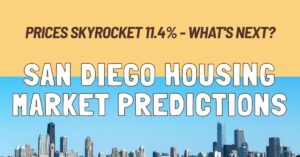The Federal Reserve's April 30, 2024 meeting concluded with a decision that sent ripples through financial markets: interest rates would remain unchanged. This decision, following a period of aggressive rate hikes in 2022 and 2023, surprised few. However, the Fed's accompanying statement revealed a source of continued anxiety – a troubling “lack of further progress” towards its target inflation rate of 2%.
While the Fed's previous hikes had brought some relief from the inflationary pressures that had choked the U.S. economy, recent data painted a concerning picture. Inflation, though showing signs of easing, wasn't on the rapid descent many had hoped for. Core inflation, which excludes volatile food and energy prices, remained stubbornly high. This suggested that broader price increases were persisting, raising fears of a potential inflation resurgence.
From Hikes to Holding: A Wait-and-See Approach
The Fed's decision to hold rates reflects a cautious approach. Anticipation of a shift towards rate cuts was thwarted by the lack of progress on inflation. This “wait-and-see” strategy allows the central bank to monitor economic data closely and adjust policy as circumstances evolve. The Fed is essentially pausing to assess the effectiveness of its past hikes while taking the economic temperature. This pause button also buys the Fed time to evaluate the impact of ongoing global events, such as geopolitical tensions or supply chain disruptions, that could further complicate the inflation picture.
A Delicate Balancing Act: Inflation vs. Growth
The Fed's statement acknowledged the delicate balancing act it faces. While containing inflation remains the top priority, a slowdown in economic growth is a looming concern. The central bank needs to navigate this tightrope walk, aiming to curb inflation without triggering a recession. This requires careful consideration of various economic indicators, including employment numbers, consumer spending, and business investment.
A healthy labor market with low unemployment is a positive sign, but if wage growth starts to outpace productivity gains, it could fuel further inflation. Consumer spending habits will also be closely monitored. A sustained decline in spending could suggest a weakening economy, while continued strong spending could signal persistent inflationary pressures. Business investment decisions are another factor to watch. Companies hesitant to invest due to high interest rates or uncertain economic conditions could dampen economic growth.
Eyes on the Data: Inflation and Beyond
Investors and businesses will be glued to upcoming economic data releases, particularly inflation figures. A sustained decline in inflation would open the door for future rate cuts, potentially stimulating economic activity. Conversely, a rise in inflation could force the Fed's hand, potentially leading to additional rate hikes that could dampen growth. Beyond inflation, the Fed will also be monitoring other indicators like housing prices, which have shown signs of cooling after a period of rapid appreciation. A significant correction in the housing market could have ripple effects throughout the economy.
Powell's Press Conference: Unveiling the Fed's Thinking
Later today, Fed Chair Jerome Powell's press conference is likely to shed light on the central bank's future policy direction. His comments will be scrutinized for any hints about the timing and conditions under which the Fed might consider rate cuts or even additional hikes. Investors and businesses will be parsing his every word for clues about the trajectory of the U.S. economy. Analysts will be particularly interested in Powell's views on the balance between inflation and growth, as well as his assessment of the potential impact of global factors.
Uncertainties Linger: A Period of Economic Flux
The Fed's decision to hold rates reflects a period of economic uncertainty. While the fight against inflation continues, the central bank is keenly aware of the potential risks to economic growth. The coming months will be crucial in determining the Fed's next steps and the overall direction of the U.S. economy.
Businesses will need to remain adaptable, adjusting their strategies to cope with potential changes in interest rates and consumer spending patterns. Consumers may need to adjust spending habits, potentially prioritizing necessities over discretionary purchases. Policymakers at all levels will need to carefully calibrate their actions to navigate these uncertain waters, with a focus on measures that can support both price stability and economic growth.











